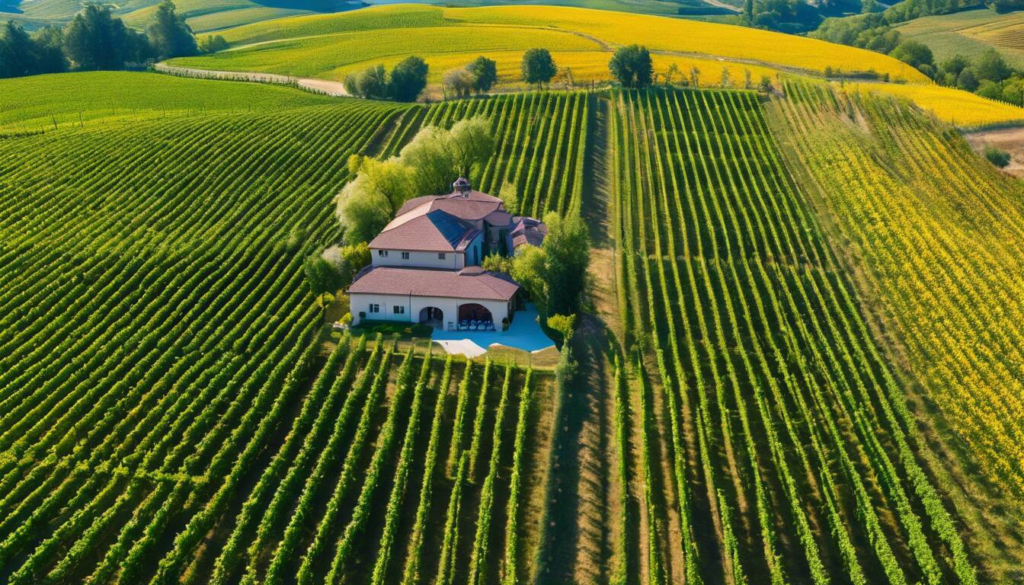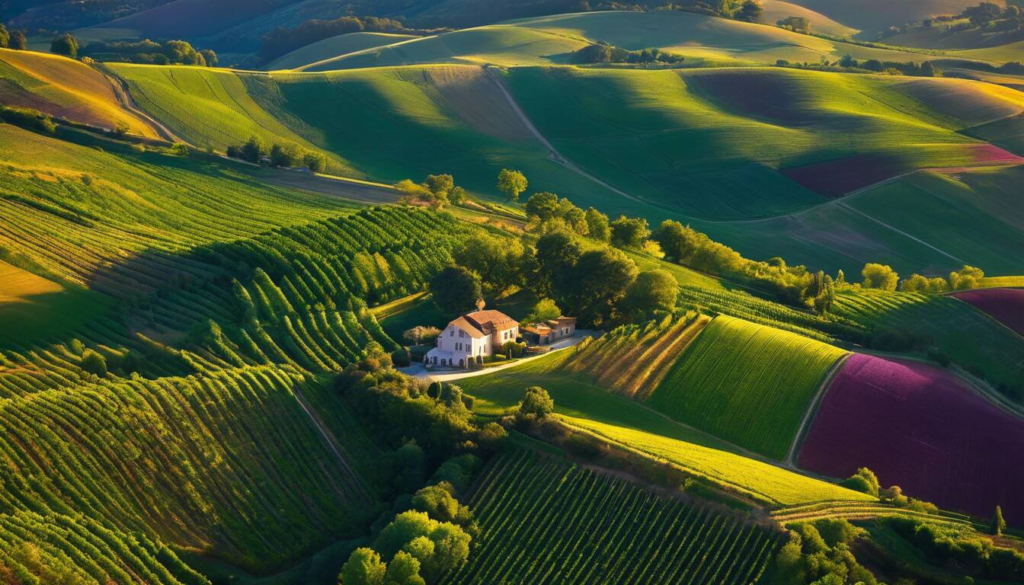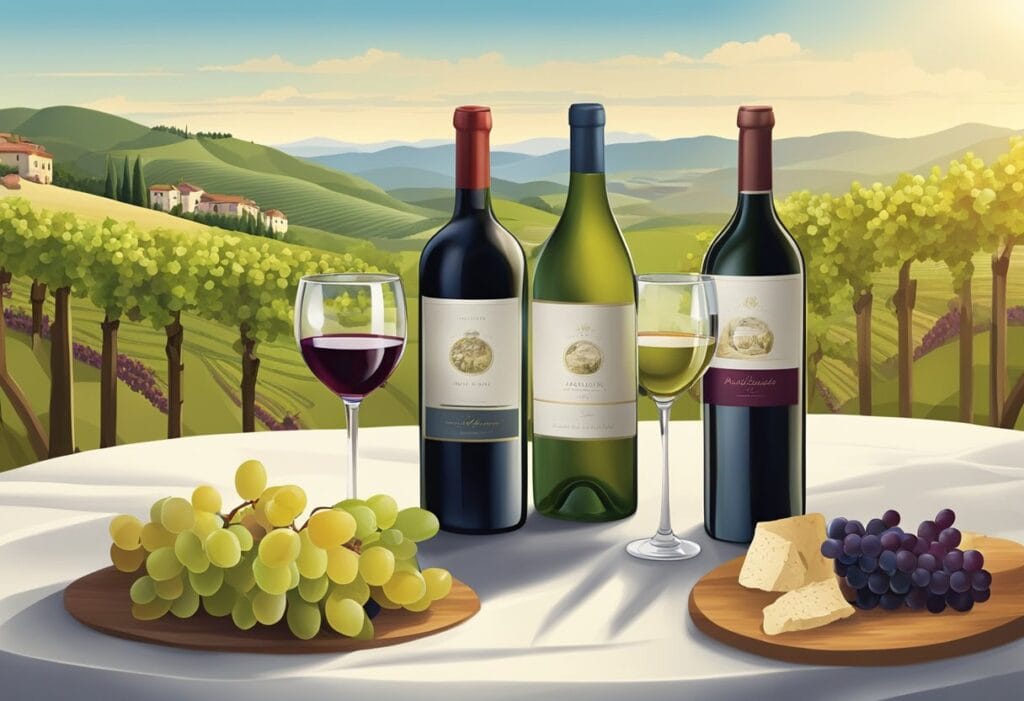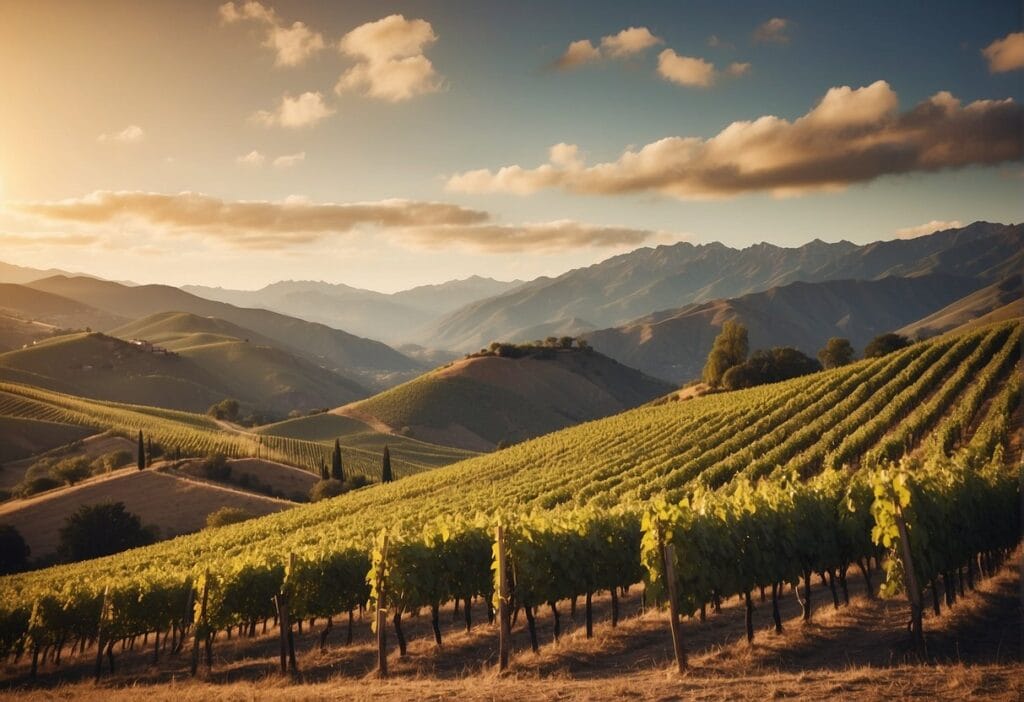The world of wine is as rich as the soils in Bordeaux, filled with unique flavors across different regions. From robust reds crafted in Napa Valley to delicate whites of Burgundy, the distinct terroirs influence every sip you take. Imagine the sun-drenched vineyards of Tuscany, ripe with Sangiovese grapes, or the historical landscapes of Piedmont, waiting to transform Nebbiolo into liquid delight. Now it’s time to begin this discovery journey.
Wine regions such as Bordeaux, France, are renowned for producing wines primarily from Cabernet Sauvignon and Merlot grapes. Meanwhile, in Tuscany, Italy, Sangiovese is the predominant varietal used to craft famous wines like Chianti. Understanding these regional varietals can enhance your appreciation for the diverse flavors and characteristics found in wines from around the world.

Exploring Different Wine Regions
When it comes to wine, the variety truly is the spice of life. Each region’s grapes carry unique flavors influenced by their geographical location, climate, and soil composition, creating diverse and distinct wines. Let’s embark on a journey through some of the most revered wine regions, where every glass tells a story of terroir, tradition, and taste.
Take Bordeaux for instance—its reputation precedes itself. The region is renowned for producing exceptional Cabernet Sauvignon, Merlot, and Cabernet Franc varietals. These rich reds owe their complexity to the temperate maritime climate, gravelly soil, and meticulous winemaking techniques employed for centuries.
Moving across continents to Napa Valley in California, we’re met with a different landscape that yields equally remarkable wines. This region offers an ideal Mediterranean climate and a remarkable diversity of soils, reflected in its bold Cabernet Sauvignon and fruity Chardonnay.
On the other side of the globe lies Australia’s Barossa Valley, where Shiraz reigns supreme thanks to the warm climate and ancient soils. The robust character and spicy undertones of Barossa Shiraz are a testament to the area’s unique terroir.
Imagine strolling through Burgundy’s rolling hills with its mosaic of vineyards. Here, the Pinot Noir grapes thrive in limestone-rich soils, giving rise to elegant and complex red wines celebrated worldwide. Additionally, Chardonnay from this region showcases a delicate balance of mineral flavors owing to its unique terroir.
Each region has its own story to tell—from the soil and climate to age-old winemaking traditions—that shapes the very essence of their varietals. Understanding these nuances enriches our appreciation for wine as we savor each bottle with newfound insight into the labor of love that goes into every sip.
Now that we’ve uncovered the unique characteristics of each wine region, it’s time to turn our attention to some signature wines that define the heart and soul of France and Italy.
Signature Wines of France and Italy
When you think of French wines, words like “elegant” and “sophisticated” may come to mind. And rightly so—France is home to truly iconic wines, each region producing its exceptional varietals that have stood the test of time. Bordeaux is best known for its Cabernet Sauvignon and Merlot blends, creating rich, complex red wines that are sought after worldwide.
These Bordeaux grapes flourish in a maritime climate, where the soil and weather provide perfect conditions for them to develop into well-structured, flavorful wines. The distinct characteristics of these varietals contribute to the production of bold, full-bodied wines with firm tannins ideal for aging. Their longevity in the cellar only adds to their allure.
On the other hand, Burgundy boasts an illustrious reputation for producing exquisite Pinot Noir and Chardonnay wines. These grapes flourish in Burgundy’s cooler climate and calcareous-clay soil, resulting in elegant and aromatic red and white wines highly regarded by wine enthusiasts worldwide. Each sip showcases the region’s attention to detail and quality in winemaking.
Tuscany’s Sangiovese and Piedmont’s Nebbiolo
In Italy, Tuscany is synonymous with the Sangiovese grape. This iconic varietal gives life to the esteemed Chianti wines, famous for their versatility and finesse. The unique terroir of Tuscany imparts distinctive flavors to the Sangiovese grape, creating wines with bright acidity and charming fruit notes that keep wine enthusiasts captivated.
The cultural impact of these Italian varietals extends beyond their flavors; they’re an integral part of local traditions and celebrations. Sangiovese has become synonymous with Italian cuisine, complementing a wide array of dishes from pasta to grilled meats. Its unassuming elegance is a testament to its enduring popularity.
Moving north to Piedmont, we encounter the regal Nebbiolo grape, famed for producing prestigious Barolo and Barbaresco wines. Nebbiolo thrives in Piedmont’s hilly terrain with its diverse microclimates, allowing it to develop into robust and complex red wines that exude a sense of place.
The compelling history behind these varietals is ingrained in their connection to local customs and time-honored winemaking practices. Throughout centuries, winemakers have meticulously tended to these grapes, ensuring that they reflect the true essence of their respective regions.
The signature wines of France and Italy encapsulate centuries of tradition, cultural heritage, and distinct regional terroirs—each bottle bearing witness to generations of dedication and expertise.
Captivating Varietals from Spanish Vineyards
When it comes to Spanish wines, one word often comes to mind: diversity. Spain is known for an incredibly wide range of grape varietals, each with its own unique flavor profile and story to tell. From the bold and complex Tempranillo found in Rioja to the crisp and refreshing Albariño from Rías Baixas, there’s something for every wine enthusiast.
One of the gems of Spanish winemaking is undoubtedly the Tempranillo grape. Hailing from the famed Rioja region, Tempranillo embodies the essence of Spanish wine culture. This grape thrives in the warm, sunny climate of Spain, producing wines with flavors ranging from rich red berries to earthy undertones. The traditional winemaking techniques in Rioja, where Tempranillo takes center stage, contribute to its bold and expressive nature.
Moving north to Rías Baixas, we encounter a completely different yet equally captivating wine – Albariño. Nestled among green valleys and coastal landscapes, this white varietal reflects its terroir with aromas of fresh citrus fruits and delicate floral notes. The influence of Spanish terroirs becomes apparent as we see how Albariño’s flavors are shaped by the cool maritime climate of Rías Baixas.
Next on our vinous journey is Garnacha, also known as Grenache in other parts of the world. In Priorat, this grape reveals its power and intensity through robust red wines. The vineyards here are nestled among rugged hillsides, where old Garnacha vines delve deep into mineral-rich soils, producing wines that are both bold and elegant. The distinctive characteristics exhibited by Garnacha truly underline the influence of Spanish terroirs on winemaking.
The allure of Spanish wines lies not only in their diverse range of varietals but also in their ability to reflect the unique terroirs they call home. Each sip tells a story that captures the essence of Spain’s rich winemaking heritage.
As we savor the diverse flavors found within Spanish vineyards, our exploration continues beyond European borders to delve deeper into global wine regions.
Discovering Wines Beyond Europe
As we shift our focus to the New World wine regions of Australia, South Africa, Chile, and Argentina, we embark on a thrilling journey of discovery. These regions have made significant strides in the world of wine and are renowned for their unique varietals and distinct flavor profiles. From Australia’s robust Shiraz to Argentina’s velvety Malbec, each region offers a diverse expression in every bottle.
Australia’s Shiraz is celebrated for its bold and rich character, reflecting the warm climate and fertile soil of the Australian continent. This variety has become a global favorite, admired for its robust flavors of dark fruits, spice, and a hint of chocolate or coffee. Meanwhile, South Africa presents a compelling blend of tradition and innovation, with Chenin Blanc and Pinotage emerging as signature varietals. The dynamic terroir contributes to the creation of wines with pronounced acidity and unique fruit notes.
Moving across continents to Chile, we encounter a treasure trove of vibrant and expressive wines. The country’s distinctive geography provides an ideal setting for cultivating Carmenere, a grape variety once thought to be extinct but now synonymous with Chilean viticulture. This varietal flourishes in Chile’s Mediterranean-like climate and volcanic soil, resulting in wines that boast luscious plum, red berry, and spicy pepper notes.
Shifting our focus to Argentina, we delve into the realm of Malbec—a grape that has become synonymous with Argentine wine culture. The country’s high-altitude vineyards and sunny, arid climate contribute to the production of velvety and full-bodied Malbec wines. These wines often exhibit flavors of ripe plum, blackberry, and floral aromas, creating an unparalleled sensorial experience for wine enthusiasts.
In exploring these New World wine regions, it becomes apparent how the Southern Hemisphere’s unique climates and terroirs significantly impact flavor profiles. As we continue our journey through the global wine map, we gain a comprehensive understanding of the influential role played by environmental factors in shaping the wines we cherish.
Embarking on this exploration of global wine regions provides a solid foundation for understanding how labels and regional specifications influence the character of different wines. We will now delve further into unraveling the significance behind these intricate details as we decipher labels and make informed selections based on the grapes’ origins.
Deciphering Labels and Selecting by Region
Understanding wine labels is crucial, despite their baffling terms and abbreviations. Let’s delve into some key concepts you might encounter:
AOC in France: AOC (Appellation d’Origine Contrôlée) signifies a controlled designation of origin, indicating that the wine was produced in a specific region using defined methods. This system aims to protect and promote the reputation of regional food products.
DOCG in Italy: DOCG (Denominazione di Origine Controllata e Garantita) is Italy’s highest designation for quality wines. It ensures that the wine was produced according to strict regulations specific to its geographical origin.
DO in Spain: DO (Denominación de Origen) certifies the quality and origin of Spanish wines. It guarantees that the wine was produced in a specific area under strict regulations.
By understanding these designations, you can gain insight into where the grapes were grown, how the wine was made, and what flavors to expect. For example, a Chianti Classico DOCG from Tuscany is known for its Sangiovese grapes grown in the Chianti region, guaranteeing a particular level of quality.
Unraveling these enigmatic labels allows us to appreciate the nuances associated with wines from specific terroirs. Terroir is a French term signifying the combination of soil, air, water, minerals, and climate in a particular area giving unique flavors to grapes. It’s remarkable how minor variations in even these factors can significantly impact the taste of your favorite wine varietals!
For instance, Pinot Noir from Burgundy is distinct from Pinot Noir from Oregon due to differing terroirs. While Burgundy’s terroir produces lighter-bodied wines with earthy undertones, Oregon’s terroir results in fuller-bodied wines with fruit-forward flavors.
The next time you’re browsing through wines at your local store or choosing from a restaurant menu, take this newfound knowledge with you. Instead of feeling overwhelmed by a wide variety of wines from all over the globe, you’ll start approaching each bottle with confidence and discernment.
Recognizing regional distinctions empowers you to navigate wine offerings with an invaluable level of comprehension. It allows you to make informed choices, appreciating each sip with newfound understanding and delight—a journey that unveils an endless array of delightful experiences promptly within your reach.
Now equipped with a deeper understanding of wine regions and their varietals, let’s embark on a journey to explore lesser-known wine regions that hold their own distinctive charm and character.
Unraveling the Mosaic of Less Known Wine Regions

The world of wine is like a treasure map waiting to be explored, and off-the-beaten-path wine regions are the X that marks the spot for many enthusiasts seeking new and unique wine experiences. These lesser-known regions often have a story to tell, whether it’s in their terroir, traditional winemaking techniques, or in the diversity of grape varietals they cultivate.
Central Otago in New Zealand is one such treasure trove. It’s nestled in the southern part of the South Island and is renowned for its stunning landscapes and exceptional Pinot Noir. The cool climate and dramatic landscape contribute to the distinctive flavors of its wines, giving them a character that sets them apart from other Pinot Noirs produced around the world. As you savor a glass of Central Otago Pinot Noir, you’ll detect notes that reflect the region’s unique terroir—perhaps a combination of vibrant red fruit and earthy undertones that mirror the region’s geological diversity.
Meanwhile, Swartland in South Africa offers an eclectic array of varietals ranging from Chenin Blanc to Syrah, carving out a niche for itself as a hub of organic and natural viticulture. The warm climate, ancient soils, and passionate winemakers work together to produce wines that are vivacious, full of character, and reflective of the region’s commitment to sustainable practices. Exploring this region allows wine enthusiasts to discover a vibrant tapestry of flavors that express the essence of Swartland’s terroir.
Some may argue that sticking to tried-and-true wine regions is safer than venturing into lesser-known areas, but taking chances on these emerging regions can lead to delightful surprises. These explorations can unlock unique taste experiences that enrich one’s love for wine and expand their understanding of regional influences.
For example, Colchagua Valley in Chile excites with its exquisite Carménère—the “lost grape of Bordeaux.” During an era when Carménère was thought extinct due to phylloxera in Europe, it found refuge in Chile where it thrives today. Venturing into Colchagua Valley offers a window into this fascinating varietal, showcasing its rich history and distinctive attributes.
Daring to savor wines from lesser-known regions like Central Otago, Swartland, or Colchagua Valley is akin to unraveling a captivating story—one that gives depth and complexity to your wine-tasting journey. By embracing these hidden gems, we not only celebrate diversity but also enrich our palates with flavors that tell tales of unique terroirs and passionate winemaking traditions.
As you navigate through the vast world of wines, remember that each bottle holds within it not just liquid but stories woven by nature and tradition. Here’s to many more discoveries and enriching experiences in your wine escapades.

